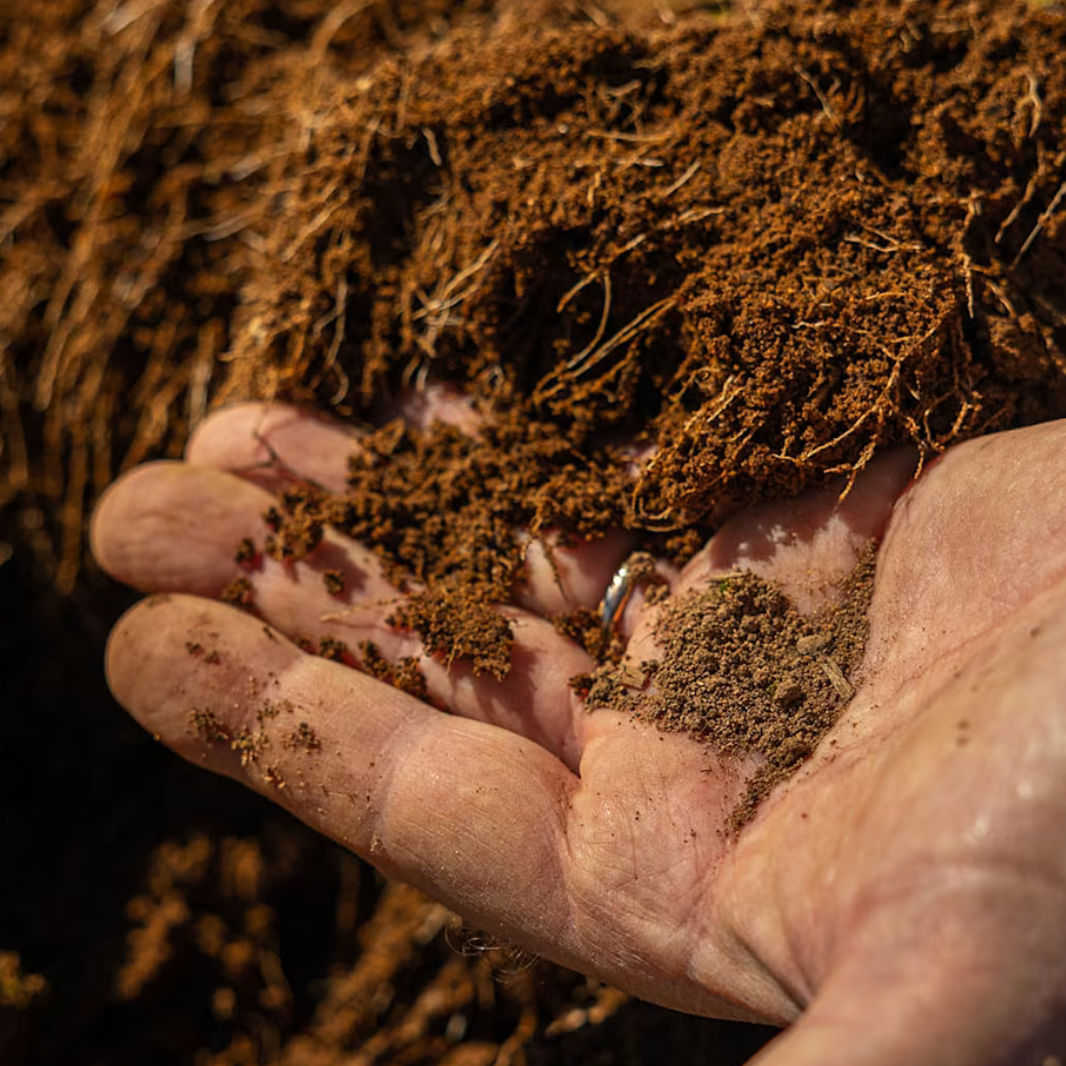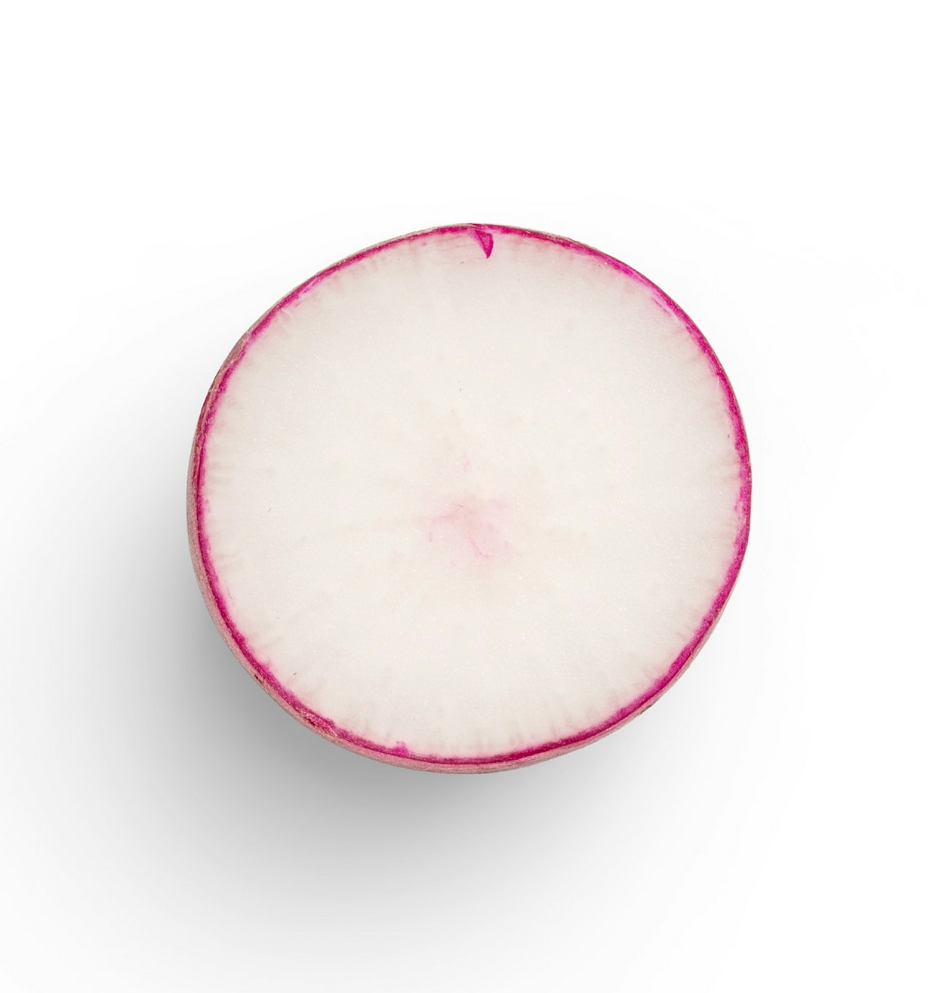Biolatina's Radish is:

Enviroment
They grow near the Circeo Natural Park, in lush nature, among dozens of protected species of plants and animals.

Organic and Biodynamic
Certified from seed to plate since 1985.

Fresh
Harvested and immediately distributed, they undergo no preservation processes apart from refrigeration during the hottest periods: thus, they retain all their properties.

Dedicated work-line
Harvested, hand-sorted, and washed in the company's exclusive facility, which is used only and exclusively for Biolatina's organic products, with no possibility of contamination.

Sustainable
Harvested and immediately distributed, they undergo no preservation processes apart from refrigeration during the hottest periods: thus, they retain all their properties!

Biodiversità
They are cultivated together, through intercropping or rotation, with more than 300 types and varieties of vegetables and legumes.

Chemical Free
No synthetic chemical residues have been detected on our radishes in over 40 years of chemical analyses conducted by certified third-party laboratories.

Whole
They are sold in bunches, leaves and roots together!

Plastic free
Packaged without plastic

Trasparency
Certified traceability thanks to GLOBAL G.A.P. and CODEX certifications.
Properties and benefits
The radish (Raphanus sativus L.) is a widespread edible plant belonging to the Brassicaceae family.
As with many other vegetables, there is no absolute certainty regarding its possible place of origin, although most research seems to identify it in the more eastern regions of Asia; China and Japan, where the greatest number of varieties can be found.
Nevertheless, the radish was already known in the West as early as Ancient Egypt, where it was used for food purposes. Written sources also document its use for medicinal purposes, particularly to aid digestion, by Greek and Latin physicians.
Extracts prepared from radish leaves and roots have been used since antiquity in folk medicine, both in the East and the West, for the treatment of gastric disorders, urinary infections, liver inflammation, circulatory disorders, and ulcers [1].

The nutritional and health properties of radishes have been proven by numerous scientific studies.
The benefits derived from consuming radishes are generally attributable to the presence of secondary metabolites, such as glucosinolates, polyphenols, and isothiocyanates. Positive health effects have been observed in relation to pathological conditions such as cancer, diabetes, liver inflammation, and oxidative stress [1].
Radish roots and leaves are rich in nutrients and a source of secondary metabolites with antioxidant properties. Compared to the roots, the leaves contain higher levels of protein, calcium, ascorbic acid, as well as phenols, with a potential action in combating free radicals [8]. Some research has described various forms of polyphenols present in radish tissues. Higher levels of pyrogallol (in free form) and gallic acid have been found in the roots, while the leaves have higher contents of epicatechins and coumaric acid [2]. Much higher levels of flavonoids—up to four times more—have been found in the leaves compared to the roots. Among all polyphenols, flavonoids are those with the most pronounced antioxidant activity [3]. A series of *in vitro* studies [4] have demonstrated the antioxidant and pro-oxidant properties of red radishes. Furthermore, red radishes have higher levels of anthocyanins compared to other types [5,6,7].

Radish extracts have shown a cytotoxic action against a colon cancer cell line (HCT116) [8]. The presence of bioactive phytonutrients, such as sulforaphane, was identified in the extract using mass spectrometry (GC–MS). Radish extract induces apoptosis in colorectal cancer cells. Sulforaphane appears to be involved in the disruption of tubulin polymerization [9,10,11].
Furthermore, additional studies have identified preventive and supportive therapeutic effects of radish consumption against diabetic pathology. This could be due to its antioxidant potential and reduction of free radical accumulation, as well as its ability to reduce intestinal glucose absorption and to promote the utilization and correct metabolism of sugars [12].

A further established fact is the significant vitamin C content of radishes [13].
The scientific literature is now unanimous in recognizing various properties of vitamin C; specifically, it contributes to:
- The normal formation of collagen for the proper function of skin, cartilage, bones, teeth, and blood vessels [14]
- Normal energy-yielding metabolism [15]
- The normal function of the nervous system and the immune system [14][15]
- The protection of cells from oxidative stress [14][15]
- The reduction of tiredness and fatigue [15]
- The increase of iron absorption [14]
Some additional notes on organic radishes in general
Several studies seem to show that vegetables cultivated under organic farming systems have a significantly higher content of numerous nutrients compared to those grown with conventional systems [16].
A meta-analysis, published in 2014 in the British Journal of Nutrition and conducted on 343 studies published in prestigious scientific journals, found that the concentrations of a wide range of antioxidant substances, including polyphenols, were significantly higher—in some cases, such as for anthocyanins, by as much as 51%—in organically grown crops compared to those from conventional cultivation [17].

Bibliography
[1] Manivannan A, Kim JH, Kim DS, Lee ES, Lee HE. Deciphering the Nutraceutical Potential of Raphanus sativus-A Comprehensive Overview. Nutrients. 2019 Feb 14;11(2). pii: E402. doi: 10.3390/nu11020402.
[2] Goyeneche R., Roura S., Ponce A., Vega-Galvez A., Quispe-Fuentes I., Uribe E., Di Scala K. Chemical characterization and antioxidant capacity of red radish (Raphanus sativus L.) leaves and roots. J. Funct. Foods. 2015;16:256–264. doi: 10.1016/j.jff.2015.04.049
[3] Grassi D., Desideri G., Ferri C. Flavonoids: Antioxidants against atherosclerosis. Nutrients. 2010;2:889–902. doi: 10.3390/nu2080889.
[4] Wang L.S., Sun X.D., Cao Y., Wang L., Li F.J., Wang Y.F. Antioxidant and prooxidant properties of acylated pelargonidin derivatives extracted from red radish (Raphanus sativus var. niger, Brassicaceae) Food Chem. Toxicol. 2010;48:2712–2718. doi: 10.1016/j.fct.2010.06.045.
[5] Castaneda-Ovando A., de Lourdes Pacheco-Hernández M., Páez-Hernández M.E., Rodríguez J.A., Galán-Vidal C.A. Chemical studies of anthocyanins: A review. Food Chem. 2009;113:859–871. doi: 10.1016/j.foodchem.2008.09.001
[6] Kong J.M., Chia L.S., Goh N.K., Chia T.F., Brouillard R. Analysis and biological activities of anthocyanins. Phytochemistry. 2003;64:923–933. doi: 10.1016/S0031-9422(03)00438-2..
[7] Mazza G., Miniati E. Anthocyanins in Fruits, Vegetables and Grains. CRC Press; Boca Raton, FL, USA: 2018.
[8] Pocasap P., Weerapreeyakul N., Barusrux S. Cancer preventive effect of Thai rat-tailed radish (Raphanus sativus L. var. caudatus Alef) J. Funct. Foods. 2013;5:1372–1381. doi: 10.1016/j.jff.2013.05.005
[9] Clarke J.D., Dashwood R.H., Ho E. Multi-targeted prevention of cancer by sulforaphane. Cancer Lett. 2008;269:291–304. doi: 10.1016/j.canlet.2008.04.018.
[10] Juge N., Mithen R.F., Traka M. Molecular basis for chemoprevention by sulforaphane: A comprehensive review. Cell. Mol. Life Sci. 2007;64:1105. doi: 10.1007/s00018-007-6484-5.
[11] Yeh C.T., Yen G.C. Chemopreventive functions of sulforaphane: A potent inducer of antioxidant enzymes and apoptosis. J. Funct. Foods. 2009;1:23–32. doi: 10.1016/j.jff.2008.09.002.
[12] Banihani S.A., Nutrients 2017Effect of radish and some of its bioactive components on type 2 diabetic conditions. Nutrients 2017,9, 1014; doi:10.3390/nu9091014 www.mdpi.com/journal/nutrients
[13] USDA Website https://fdc.nal.usda.gov/fdc-app.html#/?query=ndbNumber:11429
[14] EFSA Panel on Dietetic Products, Nutrition and Allergies (NDA); Scientific Opinion on the substantiation of health claims related to vitamin C and protection of DNA, proteins and lipids from oxidative damage (ID 129, 138, 143, 148), antioxidant function of lutein (ID 146), maintenance of vision (ID 141, 142), collagen formation (ID 130, 131, 136, 137, 149), function of the nervous system (ID 133), function of the immune system (ID 134), function of the immune system during and after extreme physical exercise (ID 144), non-haem iron absorption (ID 132, 147), energy-yielding metabolism (ID 135), and relief in case of irritation in the upper respiratory tract (ID 1714, 1715) pursuant to Article 13(1) of Regulation (EC) No 1924/2006 on request from the European Commission. EFSA Journal 2009; 7(9):1226. [28 pp.]. doi:10.2903/j.efsa.2009.1226[
[15] EFSA Panel on Dietetic Products, Nutrition and Allergies (NDA); Scientific Opinion on the substantiation of health claims related to vitamin C and reduction of tiredness and fatigue (ID 139, 2622), contribution to normal psychological functions (ID 140), regeneration of the reduced form of vitamin E (ID 202), contribution to normal energy-yielding metabolism (ID 2334, 3196), maintenance of the normal function of the immune system (ID 4321) and protection of DNA, proteins and lipids from oxidative damage (ID 3331) pursuant to Article 13(1) of Regulation (EC) No 1924/2006. EFSA Journal 2010;8(10):1815. [20 pp.]. doi:10.2903/j.efsa.2010.1815..
[16] R. Pinton, Biologico la parola alla scienza. Assobio, Bologna, 2015
[17] Barański M., Średnicka-Tober D., Volakakis N., Seal C., Sanderson R., Stewart G.B., Benbrook C., Biavati B., Markellou E., Giotis C., et al. Higher antioxidant and lower cadmium concentrations and lower incidence of pesticide residues in organically grown crops: A systematic literature review and meta-analyses. Br. J. Nutr. 2014;112:794–811